The History of Climate Change: Its Global Impact and Humanity’s Response

Photo Credit: iStockPhoto/Wirestock
Unlike now, older civilizations did not have the technology to grasp or fight climate change. Their responses, migration, war, and adaptation were reactive. Today, we have data, science, and policy tools to act proactively. The real question is: will we use them wisely, or will we become another civilization lost to climate shifts?
This historical perspective adds depth to climate discourse, reminding us that while climate change isn’t new, how we respond to it will define our future.
What is Climate Change?
Climate change generally refers to large-scale increases or reductions in temperature over long-term changes in Earth’s climate. Most of the current climate changes, as they are viewed today, are thought to be man-made, with the primary cause being the burning of fossil fuels. Still, there are also natural causes, such as variations in solar energy output and volcanic eruptions.
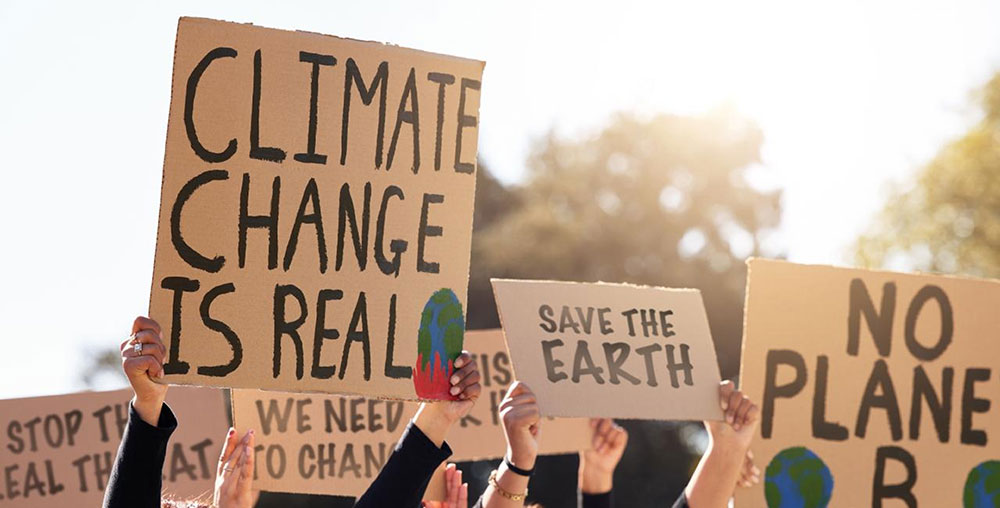
Image Source: iStock/PeopleImages
Some of the changes classified as global changes in the climate include the increasing temperatures and changes in global rainfall patterns, increased extreme weather, glacier melt, and ocean pollution, leading to a rise in water levels. It entails threats that would take a long time to bring dire consequences on human health, biodiversity, water supply, and food production.
Factors Causing Climate Change
The effects of climate change aren’t occurring by chance. It’s facilitated by both natural processes and, most importantly, human actions that have increased global warming at an all-time fast rate.
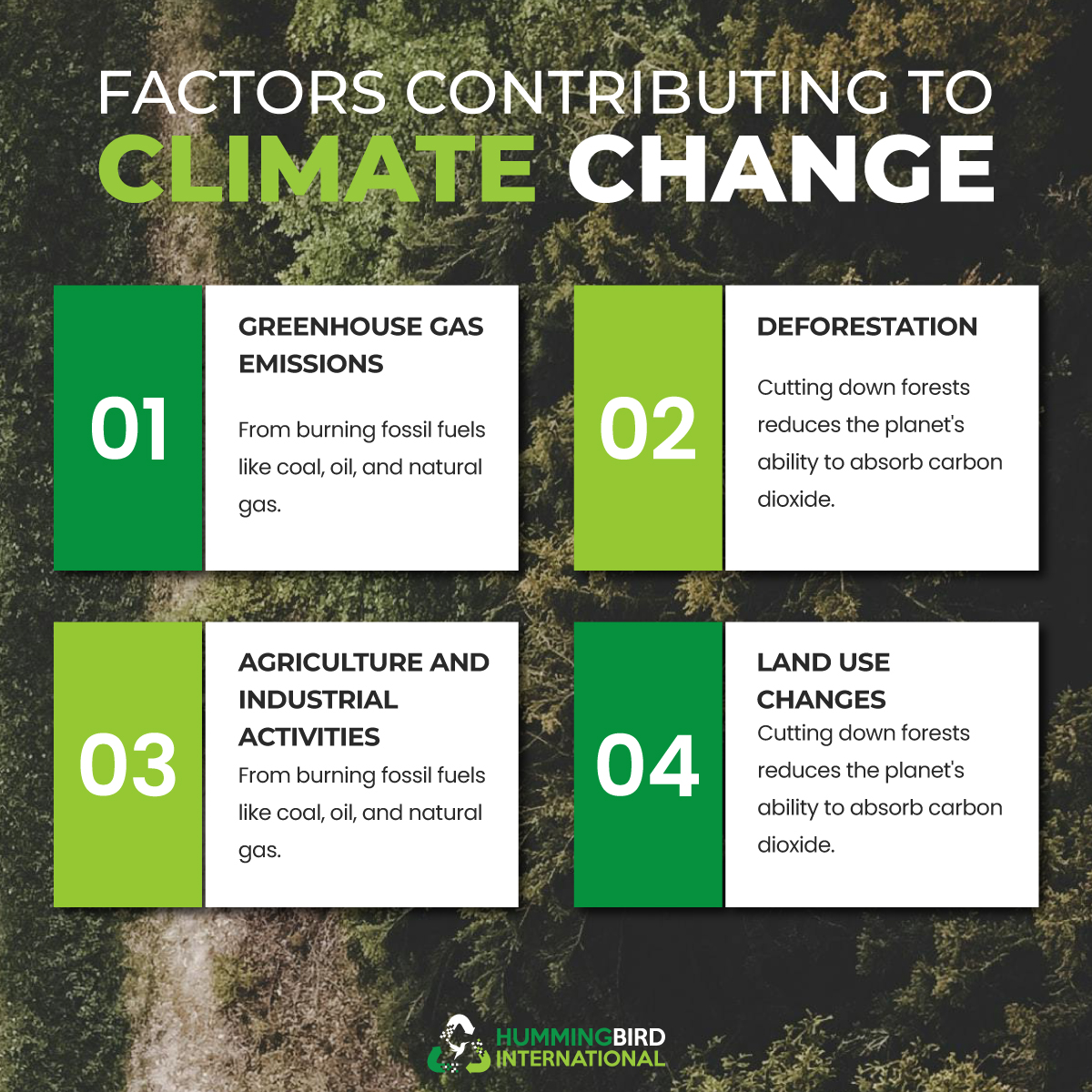
Let’s break it down:
1. Greenhouse Gas Emissions:
Hazardous to our environment, greenhouse gases include carbon dioxide (CO₂), methane (CH₄), and nitrous oxide (N₂O). One of the greatest contributors to the present climate crisis is their emission.

Image Source: iStock/CHUNYIP WONG
Trapping heat in our atmosphere, these gases tend to heat up the Earth over time and increase the temperature. Let us now trace their origins.
- Combustion of fossil fuels such as coal and oil used to generate electricity, transportation, and industrial uses.
- Deforestation, usually disregarded, destroys trees that naturally take up CO₂ hence making the atmosphere healthy for us to survive.
- Agriculture, particularly livestock work, which emits massive amounts of methane.
- Industrial processes are killing our Earth. Industries such as cement manufacturing, emit large amounts of CO₂ into the atmosphere.
2. Deforestation:

Image Source: iStock/Tarcisio Schnaider
We make it difficult for our world to survive through deforestation. The rainforest on Earth is its lungs, sucking carbon dioxide out of the air and keeping it away. However, when we harvest trees for agriculture, urban growth, or timber, that CO₂ remains in the air rather than being locked away, which actually steals the actual purpose of the plantation. With fewer trees, more harmful gases, heat, and higher temperatures drive climate change further.
3. Farming & Industry:
Industries like agriculture and manufacturing are the primary causes of climate change:
- Agriculture emits methane.
- Fertilizers emit nitrous oxide.
- Industrial processes, from factories to chemical plants, emit CO₂ and other gases.
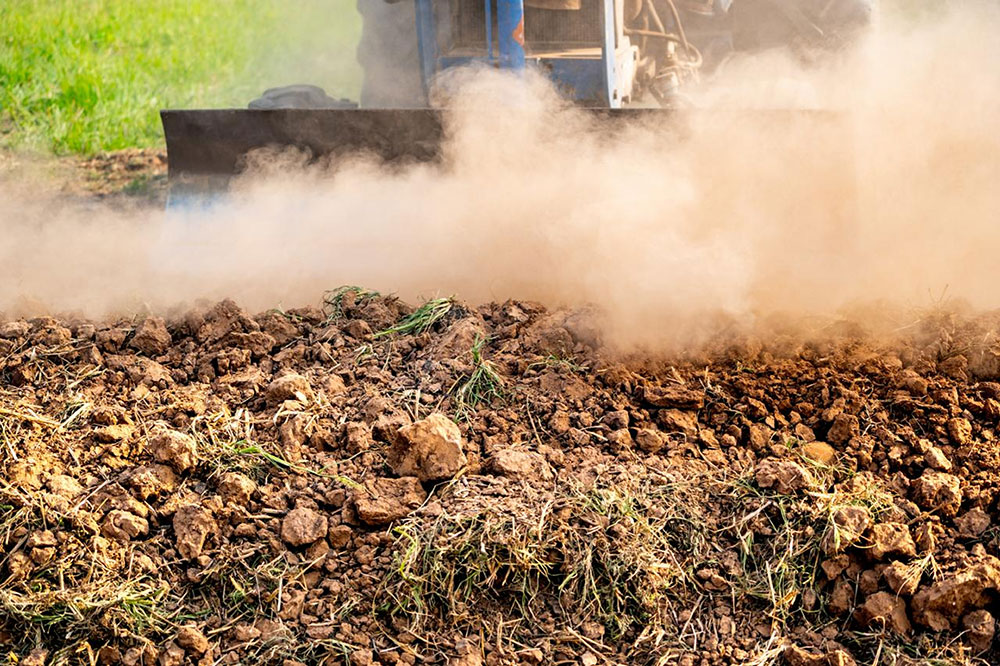
Image Source: iStock/Ritthichai
All these hazardous gases produced by industries are contributing largely to the effects of climate change we’re observing.
4. Land Use Changes:
Urbanization is not merely a matter of elegance and large buildings, it actually alters the climate and is one of the biggest causes of climate change. Concrete building, elegantly paved roads and less greenery due to deforestation produce the urban heat island effect.
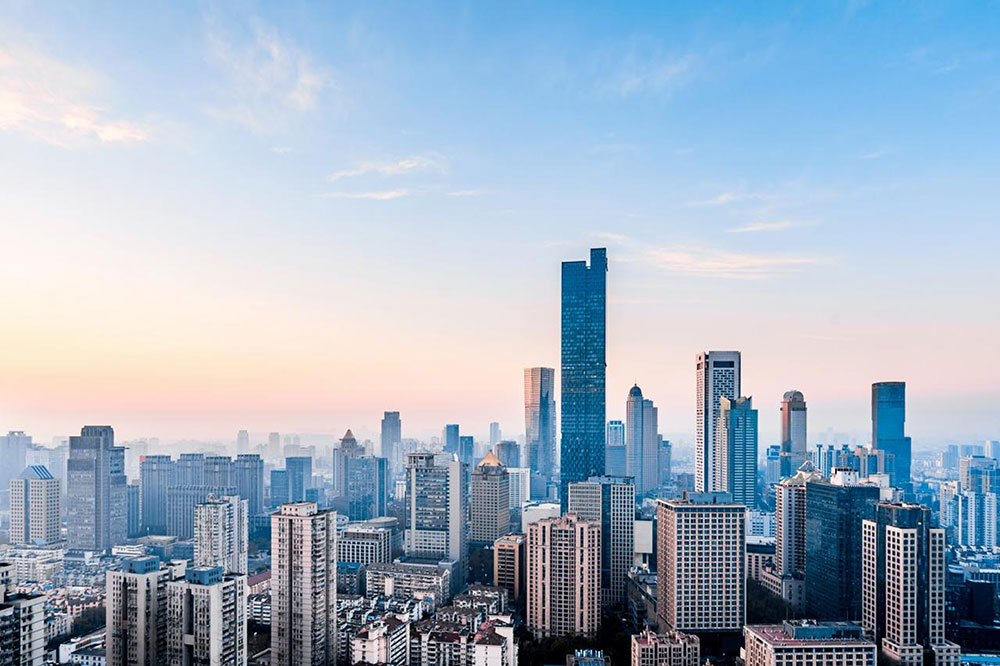
Image Source: iStock/Govan Zhang
Have you ever noticed why the countryside is so much better than the urban side? The reason is that they have not yet embraced urbanization, which means the environment there is much healthier than in cities. Urbanization and a lack of social responsibility in the corporate sector impact local climates and damage the environment, decreasing the Earth’s capacity to absorb CO₂.
Industrialization’s Contribution To Climate Change
Giant strides in development brought by the Industrial Revolution (18th to 19th centuries) marked the most critical era in the history of climate change. It has given rise to much increased emissions of greenhouse gases due to the extensive burning of coal, followed later by oil and gas. Factories were set up; transportation and deforestation for agriculture were increased, all of which contributed further to the accumulation of carbon dioxide (CO₂) in the Earth’s atmosphere. All this drove development toward global climate change by trapping more heat within the atmosphere around the Earth.
Is Climate Change Real?
In scientific circles, one may feel that the question, “Is climate change real?” belongs to the distant past. However, it prudently rears its head now and then in public discourse. The short answer, which has been repeatedly demonstrated in almost all rigorously conducted decades-long studies and global observations, is simply yes: climate change is not only real but is already causing significant, measurable changes in our planet.
Scientific Consensus
Climate change is real. Nearly every reputable scientific institution on Earth attests to it. NASA, the Intergovernmental Panel on Climate Change (IPCC), and the United Nations, among others, have published extensively on it, with evidence from thousands of peer-reviewed studies.
The UN Chronicle traces international action against climate change back to as early as the Stockholm Conference in 1972, going through a plethora of high-water marks before reaching the Kyoto Protocol and the Paris Agreement. The above, is firmly underpinned by evidence rather than unfounded guesswork.
Historical Background and Modern Confirmation
The History Channel documentation talks about climate change and awareness stretching over a century. Scientists have recognized the greenhouse effect since the 1800s, when gases like carbon dioxide trap heat in the Earth’s atmosphere. In the second half of the 20th century, it became apparent that industrial activities were associated with increased temperatures worldwide.
With today’s technology, we have been following changes in real time. As IBM’s Think Blog notes, Machine learning and AI tools are helping scientists model climate trends and predict future scenarios with remarkable precision. Importantly, they are not just concepts but have been deployed as instruments for formulating climate policies and general disaster response across the globe.
Evidence of Climate Change
Evidence of reality is in abundance in the natural world and data.
- Rising Global Temperatures: The last decade has been the warmest on record, and 2023 produced some temperature records once again.
- Melting Ice and Rising Seas: Glaciers and polar ice caps are shrinking. Earth.org says sea level rise since 1880 has been about 8 inches and is accelerating.
- Extreme Weather: Wildfires, hurricanes, floods, and droughts increasingly point to a disrupted climate.
- Changing Ecosystems: Species shifting ranges, crop failures, and ocean acidification are occurring at alarming rates.
These are not isolated occurrences. They are part of a global pattern driven primarily by human activities.
Overcoming Skepticism
While the scope of discussion has narrowed, some skepticism remains, often introduced by misinformation or misunderstandings about climate science. However, momentum is on our side. More than ever, governments, businesses, and individuals have recognized the reality of it and are now concerned about how to combat climate change. Through grassroots movements, technological innovations, and policy reforms, the global discourse on climate change has taken a major shift.
The question is no longer whether climate change is real or not; the question is how should we go about responding to it. The data is staggering with consistent patterns, and the consequences are being felt all over the planet. Recognizing the reality of climate change is, therefore, the first step toward any meaningful action. And enriched by a growing momentum for restoration, there is still optimism.
The Timeline of Climate Change
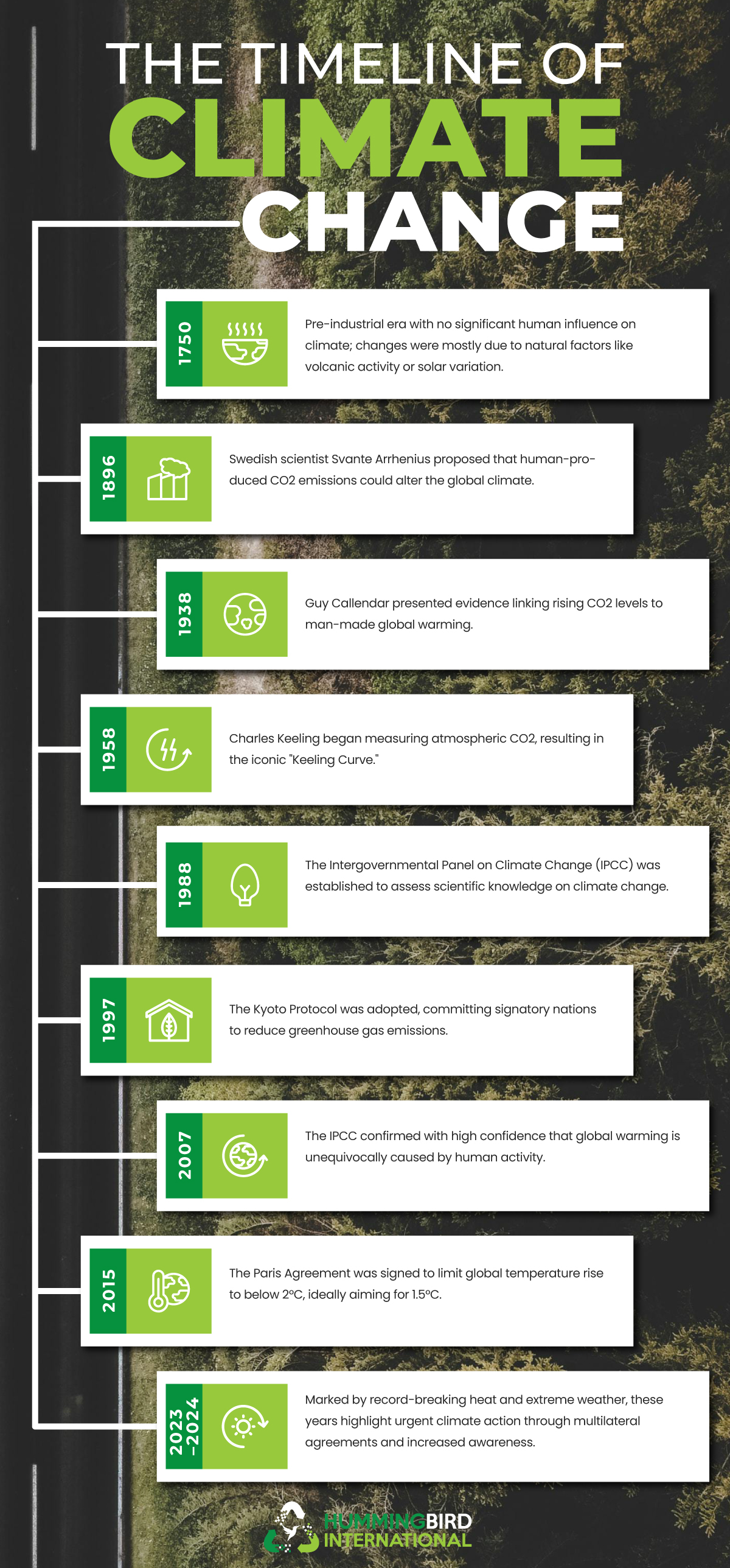
• Pre-industrial Era:
This period can be defined as before 1750 and generally, any climate changes were noted before then without contributions from other factors such as volcanic activities or solar and ocean current variations.
• 19th Century:
1896: Swedish scientist Arrhenius claimed that man could cause changes in the global climate as a result of CO2 emissions.
• 20th Century:
1938: Guy Callendar mentioned CO2 increase as a sign of man-made global warming.
1958: It was started by Charles Keeling to measure CO2 to create the “Keeling Curve.”
1988: When the IPCC established its functions to assess climate change science; the year indicates establishment.
1997: The Kyoto Protocol was adopted, and the countries that signed this protocol have committed themselves to reducing emissions.
• 21st Century:
2007: The IPCC backed up statements of unequivocal global warming caused by humans.
2015: The aim of the Paris Agreement was to constrain the temperature increase to less than 2°C.
2023-2024: Climate change progress 2024 and 2023 is significantly higher. Record heat, extreme weather, and multilateral agreements are shaping this right now.
How To Stop Climate Change?
Forget about the concept of flipping a switch to depose climate change. It is about making collaborative changes and commitments in our way of living together: how we produce things, how we consume, and how we govern ourselves.
Some effects may already have started. However, humanity still has the necessary tools and knowledge to slow down, if not reverse, some of the damage inflicted. Hence, the emphasis is on rapid and widespread action and awareness about recycling, sustainability, and eco-preservation that should be sustained for years at the individual, community, corporate, and governmental levels.
1. Switch to Renewable Energy
Burning fossil fuels is what causes climate change. Transformation of energy systems worldwide from dirty coal, petroleum, and gas into clean energy substitutes such as:
- Solar and wind energy: Both of these are already scalable and cost-effective, and can provide energy to houses, businesses, and industries.
- Hydropower and Geothermal: Reliable renewable sources with a decrease in dependence on fossil fuels.
- Battery Storage and Smart Grids: Energy storage innovations and smarter infrastructure can account for inconsistent renewables while sustaining a reliable electricity supply.
With such governments, subsidization to fund clean energy, as well as carbon taxes and an end to subsidies for fossil fuel companies, would hasten the transition.
2. Rethink Transportation
Transport accounts for emissions. Some solutions include:
- Promoting electric vehicle (EV) use: For private and public transport trips.
- Investing in good public transit and rail: A system of high-efficiency buses, trains, and metros.
- Cycling and walking: More safer, accessible bike lanes and pedestrian paths reduce those quick trips made by car.
Switching to low-emission transport options reduces emissions and improves air quality and public health.
3. Change What We Eat
One area that boasts a huge percentage of greenhouse gas emissions is agriculture and livestock farming types: methane from cows, nitrous oxide from fertilizers, and the cutting down of trees in grazing areas.
Steps taken to reduce emissions from the agriculture sector include:
- Less meat and dairy consumption; plant-based diets have a far smaller carbon footprint than diets which include animal products.
- Food loss isn’t entirely about food but the resources to produce it.
- Support sustainable farming to improve soil health and reduce carbon footprint.
Individual food choices can make a significant impact when most people implement them.
4. Support Sustainable Industry and Innovation
Industries are major polluters while leading change through digital innovation. You can:
- Make recycling a habit, and use recycled materials and renewable energy.
- Use Carbon capture and storage technologies to reduce CO2 generated as a byproduct of industrial processes.
- Implement models of the circular economy that reduce e-waste and keep materials in use longer.
This shift will be consumer-driven, so if consumers start to support eco-friendly brands, they can hold these companies accountable for any environmental destruction.
5. Take Personal Responsibility
While mass action may be necessary, personal acts count.
- Energy conservation at home may be accomplished using energy-efficient appliances and insulation.
- Vote for leaders and policies that support the climate.
- Educate and advocate – discuss climate change, support climate education, and push for systemic change.
Small steps multiplied by millions can change the path of climate change.
Final Words
At present, climate change does not come with a hope for tomorrow. It bears a legacy of every human achievement, from agriculture to industrialization to digitization, and is now poised to enter the new frontier. That which was once deemed slow progress, an almost natural phenomenon, has now taken on the form of a burgeoning crisis occurring largely due to man. Glaciers melting, oceans rising, deep-sea creatures surfacing, species going extinct, and weather systems becoming erratic. Not as exceptional phenomena but as growing, it indicates a warming world.
However, at the same time, that is our biggest opportunity. For once, we have science, technology, and an aware mass that many earlier civilizations could only dream of. It is not a question of whether there is climate change; rather, it is whether we are capable of combating the challenge or not. Bold policies, sustainable choices, and collective resolve can still shape our futures.
What we do today will not only determine our legacy but also the quality of life in our future worlds. Climate change is much more than a scientific or political phenomenon; it is very much a human one. And it is time to act.
About The Author Kelly Sampson
Kelly Sampson is a writer, blogger, and environmental enthusiast. She has strong opinions about climate change, the dogs vs. cats debate, and Oxford commas. She has lent Hummingbird International her engaging and spirited voice and turned our blog into a great place to find valuable information about e-waste, e-waste recycling, and the ITAD industry. Explore our blog to read more of her work.






